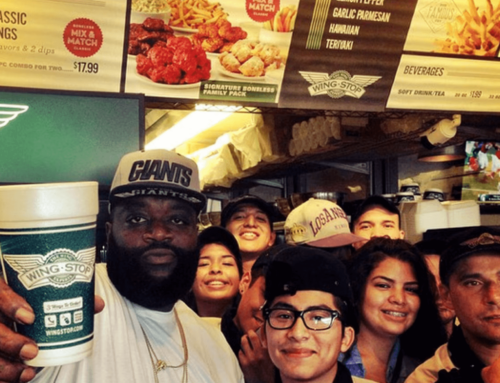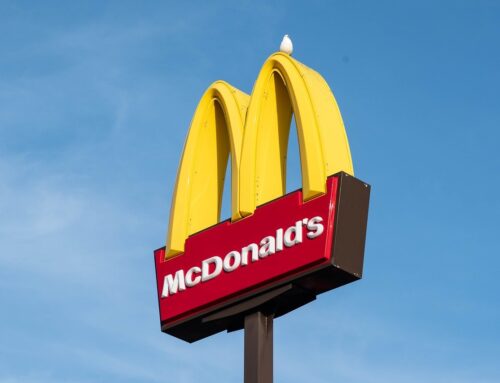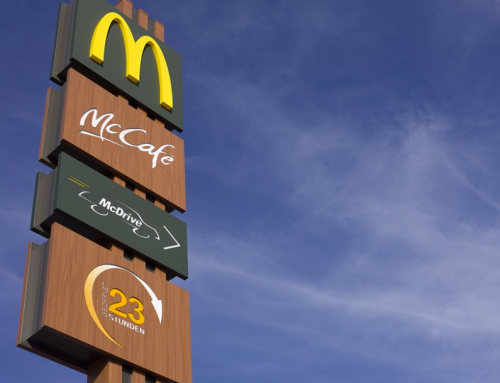Raising Cane’s Chicken Fingers was founded by Todd Graves in Baton Rouge, Louisiana in 1996. Fast forward to today and the chicken finger chain has grown to more than 500 locations across 30 states with more units under development.
The company is known for its ONE LOVE® – high-quality chicken finger dinners – and for its innovative business style and client happiness. Raising Cane’s aim is to have locations globally and to be known for serving high-quality chicken finger meals, having a fantastic crew, having a fun culture, and being engaged in the community.
With it’s fast growth, simple operation model, and drive-thru business, it’s no surprise Raising Cane’s gained the attention of franchise industry veterans and newbies alike. Unfortunately, you can’t franchise a Raising Cane’s right now. All units are privately owned. The public can’t buy stock in the company either. There’s no information available on the companies website suggesting this will change in the near term either.
Let us now dive deeper into the wildly successful restaurant concept of Raising Cane’s. If you want to be paired an opportunity that is accepting new franchisee’s right now, take our 8-minute franchise quiz.
Financial Requirements and Fees

Is Raising Cane’s franchising? No.
What would it cost to open a Raising Cane’s Chicken Fingers? Here’s an estimate of the startup costs would be if the concept was available for franchising based on QSR industry averages.
|
Requirements |
Amount |
| Liquid capital | $500,000 |
| Net worth | More than $1 million |
| Total investment | $1,000,000 – $1,937,500 |
| Franchise fee | $45,000 |
| Royalty Fee | 5.0% |
Financial Requirements
Before approving a franchise to an entrepreneur, franchise organizations have a clear minimum financial requirements. Depending on the franchise opportunity, you may require anything from several thousand to a more than a million dollars in liquid capital and good credit score.
Here are some of the financial terms you’ll need to understand before investing in any food franchise:
- Liquid capital – This refers to the total amount of cash you’re required to have on hand. This could include money in a checking account, savings, retirement account. Loans or value locked up in a property do not qualify as “liquid.”
- Net worth – The amount of all of your non-financial and financial assets less the value of all of your outstanding liabilities is your net worth.
- Total investment – The total amount of money you’ll need to invest in the franchise to get it up and running. Total investment will usually include an initial franchise fee, cost to build out a location, equipment, and permits.
- Franchise fee – The fee you must pay to the franchisor in exchange for the use of its brand and resources. This expense usually covers training on how to operate the business.
- Royalty fee – A royalty fee is a recurring payment made by the franchisee to the franchisor. The royalty fees are used by the franchisor to assist its existing franchisees as well as to maintain and grow the franchise system. The royalty fee is normally paid weekly or monthly, calculated as a percentage of gross or net sales, typically ranging from 5% to 10%. Depending on the number of sales, the percentage in various systems grows or falls. The royalty fee in various franchise systems is determined as a minimum or fixed fee, or on some other basis.
How Much Profit Does A Raising Cane’s Franchisees Make Per Year?
Company revenue/sales per year: Raising Cane’s Chicken Fingers sales have exceeded $1.5 billion, more than tripling in the last four years. Raising Cane’s expanded 11.4 percent in units and 17.5 percent in sales during the 2020 pandemic year. Also, the La.-based chicken finger chain’s total system-wide sales were at $1.722 billion average unit sales reaching $3.85 million. Only Chick-fil-A has higher average unit sales numbers.
Number of units: 509 units at the end of 2020, an increase of 52 units over the previous year.
Average Gross Revenue Per Store: $1.722 billion (System-wide sales) ÷ 509 units = $3.383 million.
Industry Average Profit Margin: Fast-casual restaurants, often known as fast food or quick-service restaurants, allow customers to order at a counter or use self-service options.
Franchise Review: Is the Crumbl Cookies Franchise Too Expensive?
Despite the fact that factors such as franchise affiliation can influence profit margins, fast-casual restaurants normally have a profit margin of 6-9 percent. This profit margin reflects cheaper labor expenses in the kitchen for pre-prepared meals and a higher table turnover rate as a result of faster service.
While we don’t have any concrete numbers to support since the company is publicly held and does not need to report business performance quarterly, I’d bet the profit margin for this company is well above average in the QSR industry. The company has such a paired down menu, it’s probably that waste and product sourcing is lower, leading to greater profit margins.
Projected Annual Profit Per Store:

Despite not belonging to one of the top quick-service restaurants in the country, Raising Cane’s is definitely headed there. Raising Cane’s yearly sales have now topped $1.5 billion, a threefold increase in just four years. Over 500 outlets have already been opened by the company across the United States.
The fact that average unit volumes are approaching $3.6 million is even more astonishing. McDonald’s makes around $2.8 million in AUV’s as a comparison. Just imagine how many chicken strip baskets that revenue number represents each year.
SWOT Analysis
Raising Cane’s began in 1996 and is known for its delicious chicken fingers and their sauce. Today, the company has erected more than 500 establishments and shows no sign of stopping. Here’s a SWOT analysis of the Raising Cane’s franchise so you understand the strengths and challenges of the company.

25 years of chicken fingers.
Strengths
- Efficient service. Raising Cane’s is a fast-paced restaurant where guests may expect their food to arrive promptly.
- Focused menu. Raising Cane’s reduces purchasing costs by only selling a small number of dishes on their menu.
- Community involvement. Every site is actively involved in the community in which it is located.
- Quality ingredients. The fact that they use fresh chicken rather than frozen chicken improves the quality of their product.
- Famous sauce. Raising Cane’s is the only restaurant that serves and sells “Cane’s Sauce,” which draws in the vast majority of its patrons. This is a personal favorite for me at the restaurant.
Related Reading: Will In-N-Out Burger Ever Franchise? (Total Cost + Startup Process)
- Good workplace. Raising Cane’s was voted #89 in the nation’s Best Places to Work in 2021 across all industries, receiving a Glassdoor Employees’ Choice Award for the 3rd time since 2017. The lone company from Louisiana on the list is Raising Cane’s.
- Quality food. They have a unique business plan in that they focus on what they do best, which is offering high-quality chicken fingers. These aren’t the standard frozen chicken fingers pulled out of the freezer.
Weaknesses
- Limited outlets. In Georgia, Colorado, and Massachusetts, Raising Cane’s has only one restaurant each. There are many markets where consumers have never heard of the chain. As the company grows, more consumers will discover and become fans of the restaurant.
- Steep pricing. Raising Cane’s pricing has been called reletively high, which may deter customers and thus be viewed as a flaw. For example, 28 fingers with 8 sauces will cost $35.49. This package does not include any sides. You can get a Box Combo that includes 4 fingers, crinkle cut fries, 1 Cane’s sauce, Texas toast, coleslaw and a fountain drink for $8.69 before tax. I don’t view these prices out of line with the competition.
- Nominally nutritious. The menu items aren’t particularly nutritious. There’s a lot of deep fried food here and not really any alternatives for vegan or vegetarian diets.
- Limited menu option. Customers who are “picky” may be turned off by the menu’s limited selection.
Opportunities
- Global Expansion. In 2015, the business started to expand abroad with its first foreign restaurant launching in Kuwait. At this time, Kuwait has six establishments, Saudi Arabia has eleven, Bahrain has two, and Lebanon and the United Arab Emirates each have one. For the chain, this brings the total number of overseas outlets to 21. Further international expansion of the brand is an obvious opportunity for the chain.
- Local expansion. The corporation creates opportunities to open outlets in the 33 states where they currently do not have any presence.
- Additional outlets. They can open new stores in states where there are now only one or two branches.
Threats
- Direct competitor. There are plenty of competitors in the quick-service restaurant space that focuses on chicken. One competitor that could position more of a focus on fingers is Chick-fil-A. Other fast food chains sell this menu as well.
- Similar food type. Many stores across the US have a similar style of food. You can pick up chicken fingers, fries, and toast pretty much anywhere. This seems like it could be a menu concept that would be easy to emulate.
- Price point. Restaurants with a lower price point, such as Mcdonald’s, have more menu options for items like chicken nuggets.
- Past reviews. Customers may be turned off by negative feedback from families and former employees. Keeping tabs on customer and employee feedback is essential for any business to continue to thrive.
Is the Raising Cane’s Worth the Cost to Invest?
With all this being said, Raising Cane’s is not available to franchise right now. There’s no evidence they’ll be allowing franchisees to join the the near-term either. But if the company was offering this option, it would be a franchise restaurant worth evaluating. The company has strong revenue, unit growth, and loyal customer base.
If you want to be get into the QSR business, take a look at Steak ‘n Shake. You can join this company as a franchise partner for only $10,000. According to reports, the typical franchise partner in this business made $161,079 in 2020.
Related Reading: Can You Be Fired from a Franchise Business You Invested In?
Raising Cane’s has the capability to grow further in the United States and around the globe. They focus on food that is popular among the general public, resulting in a large customer segment and prospective client base. Since they’re not yet easily accessible across the country, there are plenty of unexplored markets waiting for them. Consumers love additional choices, and if you can create a restaurant in an underserved location, you could have a tremendous hit on your hands.
If you’re serious about opening a franchise restaurant of your own, take our 8-minute franchise quiz to find the best fit.




